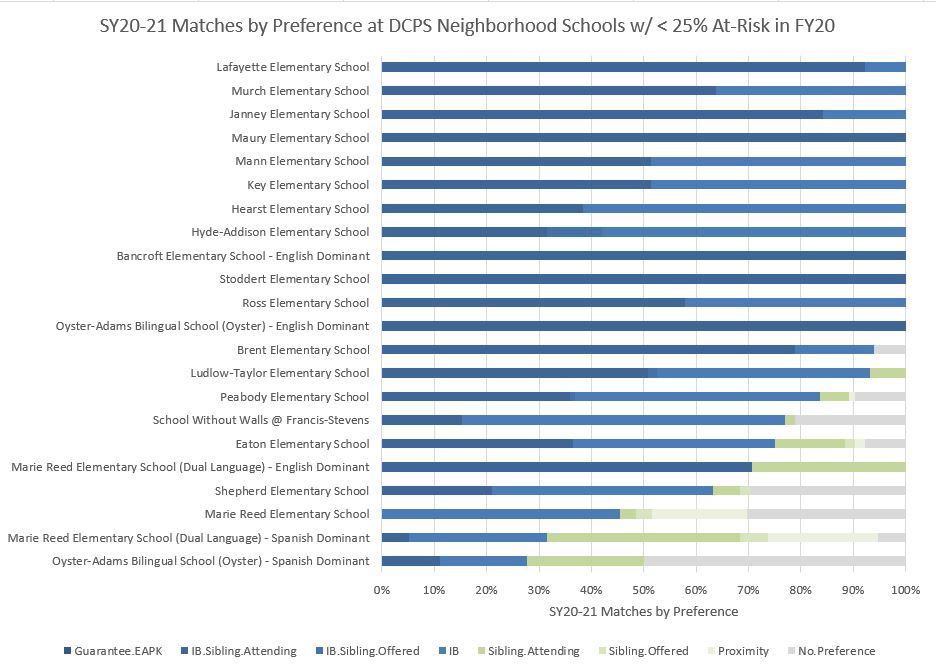We know an “at-risk” preference has to be prioritized before in-boundary or sibling applications in the @MySchoolDC lottery to have its largest impact. So, what& #39;s the preference order? Well, it depends … (thread)
What’s a lottery preference? A preference (e.g. in-boundary, sibling) allows schools to favor certain students over others in their random selection process. There& #39;s a helpful FAQ on the @MySchoolDC website that explains each type of preference.
#preference">https://www.myschooldc.org/faq/key-terms #preference">https://www.myschooldc.org/faq/key-t...
#preference">https://www.myschooldc.org/faq/key-terms #preference">https://www.myschooldc.org/faq/key-t...
There weren& #39;t always charter lottery preferences. In 1999, Congress added a sibling pref (PL106-113). In 2006, a Mendelson amendment added a pref for founding board members (L16-268). The FY15 BSA added a pref for full-time staff (L20-155). SPED & military prefs added in 2015-16.
But each LEA gets to decide which preferences they want to offer and how to order them every year. So the question remains, "what& #39;s the order?" Apparently there isn& #39;t a list ... https://abs.twimg.com/emoji/v2/... draggable="false" alt="🤔" title="Denkendes Gesicht" aria-label="Emoji: Denkendes Gesicht"> https://twitter.com/MySchoolDC/status/1237141627321417728?s=20">https://twitter.com/MySchoolD...
https://abs.twimg.com/emoji/v2/... draggable="false" alt="🤔" title="Denkendes Gesicht" aria-label="Emoji: Denkendes Gesicht"> https://twitter.com/MySchoolDC/status/1237141627321417728?s=20">https://twitter.com/MySchoolD...
Good thing #webscraping exists! Here& #39;s a list I made that pulls the preferences as listed on each school& #39;s lottery page. If I missed anything, @MySchoolDC please correct the record -- and publish an official list! https://drive.google.com/file/d/1jBU0YoVOx20DxpPmQ9ARv0gygexiBkjK/view?usp=sharing">https://drive.google.com/file/d/1j...
All 118 PCSs in the SY20-21 lottery choose to grant a sibling preference in some form (attending > offered if the school is already open), but only 46 put it first in line. Most (72) prioritize others first ...
111 schools grant a preference for children of full-time staff, 32 of them in first place. This includes all KIPP schools, but also Capital City, EL Haynes and several smaller LEAs. Capped at 10% of total enrollment or 20 students, whichever is smaller.
71 schools (all multi-campus LEAs) grant a transfer preference to help w/ feeder access, 30 of whom rank it first including Appletree, DC Prep and Friendship. Others prioritize siblings > transfers: incl Center City, Lee Mont., Mundo Verde, Rocketship, Stokes and a few others.
16 schools grant a "Founders preference", including 10 that order it first. The original rationale was to help encourage parental involvement (has it worked?) and limited to "no more than 10% of the school’s total enrollment or to 20 students, whichever is less".
It& #39;s worth repeating that I put this list together in my spare time and it may have errors. Better for @MySchoolDC to verify and post one. Even better would be data on matches by preference for every school like in DCPS ... https://enrolldcps.dc.gov/node/61 ">https://enrolldcps.dc.gov/node/61&q...
Parents rely on these data to help make decisions. How you rank a school doesn& #39;t affect your chances of getting in, but families can only list up to 12 schools in their app, so they should know whether they have a realistic chance of getting a match b/f applying.
. @DCPSPlanning has a very helpful "Matches by Preference" viz on their website. 41% of DCPS matches for this fall went to kids with some form of preference. @dcpcsb could help make this type of information available for all schools.
https://enrolldcps.dc.gov/node/61 ">https://enrolldcps.dc.gov/node/61&q...
https://enrolldcps.dc.gov/node/61 ">https://enrolldcps.dc.gov/node/61&q...
Further, we can see that 100% of matches to twelve neighborhood DCPS schools went to in-boundary applicants, effectively barring those who can& #39;t afford to live in-bounds. Is this equity? @jessicasutterW6
B23-717, "Expanding Equitable Access to Great Schools Act" adds an "at-risk" preference, but "a public charter school first must receive approval from the @dcpcsb to implement this preference". That& #39;s it. Much less detail than other legislated preferences.  https://abs.twimg.com/emoji/v2/... draggable="false" alt="😬" title="Grimasse schneidendes Gesicht" aria-label="Emoji: Grimasse schneidendes Gesicht">
https://abs.twimg.com/emoji/v2/... draggable="false" alt="😬" title="Grimasse schneidendes Gesicht" aria-label="Emoji: Grimasse schneidendes Gesicht">
LEAs can choose not to grant the "at-risk" preference or rank it last. Still unclear what % "at-risk" will be used for a cutoff (research modeled < 25%), or whether more seats can be made available in non-entry grades. See example:
An "at-risk" preference must be *First Priority* or it won& #39;t have much of an impact. That& #39;s according to @MySchoolDC research published in 2018 using student-level data. Even then, it only helped about 600 kids (out of ~40,000) get new or better matches. https://twitter.com/wperkinsDC/status/991097313362960384?s=20">https://twitter.com/wperkinsD...
An alternative could be “at-risk” set aside. DCPS& #39;s pilot this yr initially struggled to fill seats, but reserved space kept spots open for post-lottery. Stevens won& #39;t have boundary or feeder rights, so still open Q if DCPS would try @ n& #39;hood schools too. https://twitter.com/wperkinsDC/status/1260960508968161280?s=20">https://twitter.com/wperkinsD...
We could require schools (PCS & DCPS) to set aside a certain % (20% maybe?) of seats each year for "at-risk" apps. This would do a lot more to Expand Equitable Access than this bill, which allows LEAs to ignore "at-risk" or rank them after other, potentially large, pref groups.
Anyways, thanks for reading!
Lots to consider before @dcpolicycenter event this Tuesday, 7/21 @ 2pm: https://www.dcpolicycenter.org/events/event-can-enrollment-preferences-increase-equity-in-d-c-schools/
And">https://www.dcpolicycenter.org/events/ev... @councilofdc hearing in two weeks, 7/31 at 10am: https://lims.dccouncil.us/downloads/LIMS/44465/Hearing_Notice/B23-0717-Hearing_Notice1.pdf">https://lims.dccouncil.us/downloads...
Lots to consider before @dcpolicycenter event this Tuesday, 7/21 @ 2pm: https://www.dcpolicycenter.org/events/event-can-enrollment-preferences-increase-equity-in-d-c-schools/
And">https://www.dcpolicycenter.org/events/ev... @councilofdc hearing in two weeks, 7/31 at 10am: https://lims.dccouncil.us/downloads/LIMS/44465/Hearing_Notice/B23-0717-Hearing_Notice1.pdf">https://lims.dccouncil.us/downloads...
And I can’t forget to thank @betsyjwolf and @erotheroth for their help in clarifying these data and my thinking on it. My #DCEduMoms  https://abs.twimg.com/emoji/v2/... draggable="false" alt="🙌🏻" title="Raising hands (heller Hautton)" aria-label="Emoji: Raising hands (heller Hautton)">
https://abs.twimg.com/emoji/v2/... draggable="false" alt="🙌🏻" title="Raising hands (heller Hautton)" aria-label="Emoji: Raising hands (heller Hautton)">

 Read on Twitter
Read on Twitter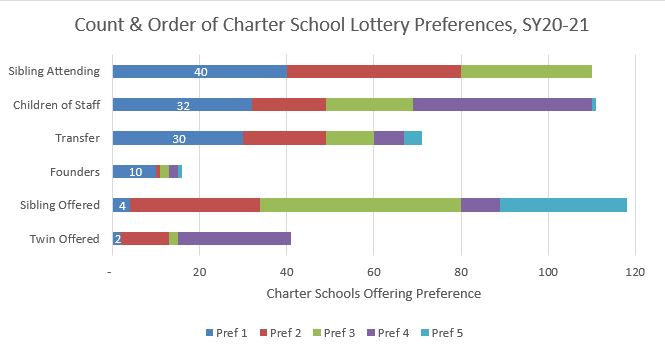

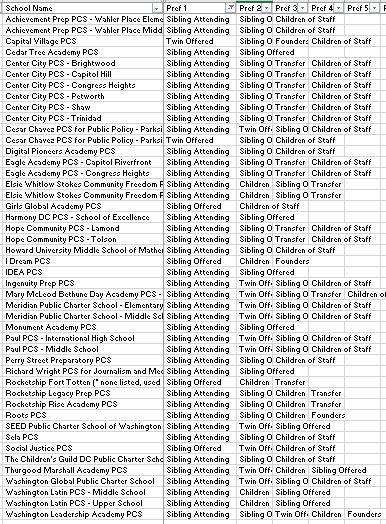
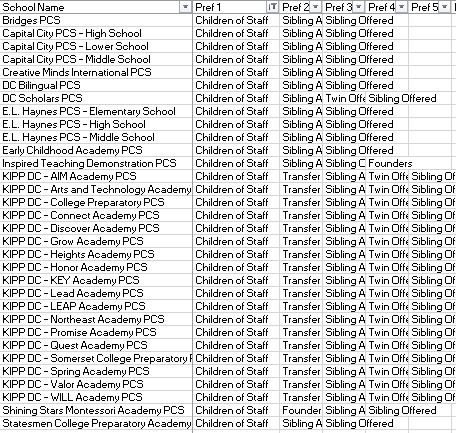
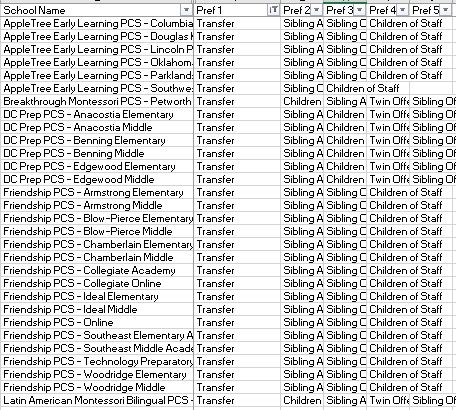
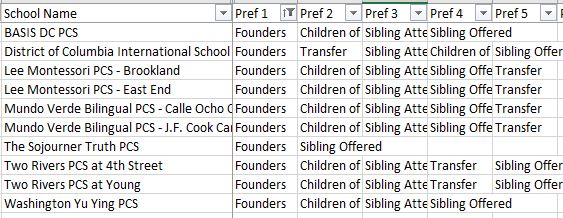
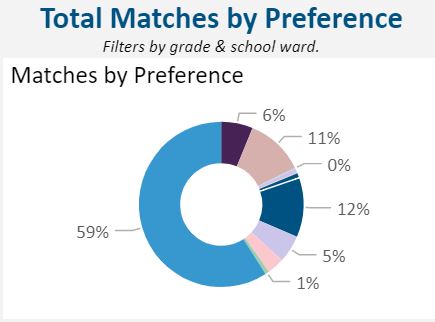
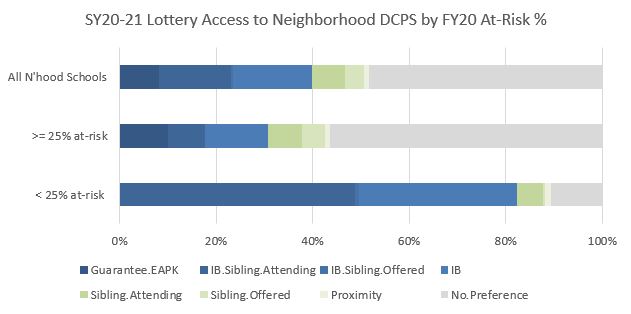 These data allow us to see that 82% of matches in DCPS neighborhood schools w/ less than 25% "at-risk" in last year’s audit went to in-boundary students. If in-boundary > “at-risk”, there& #39;ll be little or no effect. Priority of preferences matters a lot!" title="https://abs.twimg.com/emoji/v2/... draggable="false" alt="👀" title="Augen" aria-label="Emoji: Augen">These data allow us to see that 82% of matches in DCPS neighborhood schools w/ less than 25% "at-risk" in last year’s audit went to in-boundary students. If in-boundary > “at-risk”, there& #39;ll be little or no effect. Priority of preferences matters a lot!" class="img-responsive" style="max-width:100%;"/>
These data allow us to see that 82% of matches in DCPS neighborhood schools w/ less than 25% "at-risk" in last year’s audit went to in-boundary students. If in-boundary > “at-risk”, there& #39;ll be little or no effect. Priority of preferences matters a lot!" title="https://abs.twimg.com/emoji/v2/... draggable="false" alt="👀" title="Augen" aria-label="Emoji: Augen">These data allow us to see that 82% of matches in DCPS neighborhood schools w/ less than 25% "at-risk" in last year’s audit went to in-boundary students. If in-boundary > “at-risk”, there& #39;ll be little or no effect. Priority of preferences matters a lot!" class="img-responsive" style="max-width:100%;"/>
